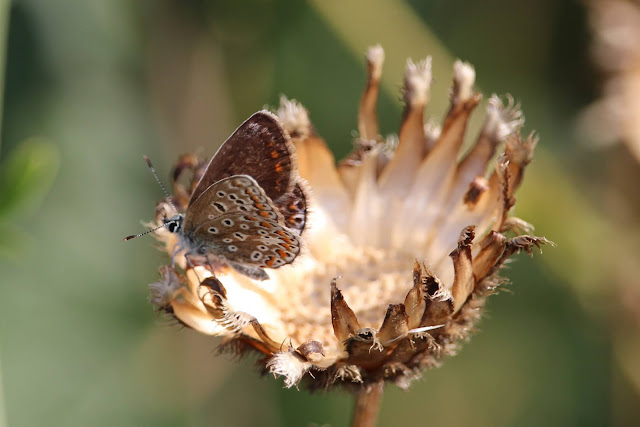Of particular note was the sighting of a Chalkhill Blue butterfly. Jennifer H commented that this record was the first in the Abington parishes for twenty years. Up until now, the nearest records were also from the Roman Road, but on the west side of the A11 where the specific food plants (Horseshoe Vetch) were planted to encourage them.
Worsted Lodge Roman Road survey. 8th August 2020. Project Team (limited)
Butterfly species
|
||
Meadow Brown
|
Small White
|
Red Admiral
|
Gatekeeper
|
Green-veined White
|
Chalkhill Blue
|
Small Heath
|
Large White
|
Common Blue
|
Essex Skipper
|
Brimstone
|
|
Flora species
|
||
Common Knapweed
|
Common Restharrow
|
Spear Thistle
|
Goat’s Beard
|
Lady’s Bedstraw
|
Bladder Campion
|
Yarrow
|
Ragwort
|
Wild Basil
|
Common Toadflax
|
Field Scabious
|
Mugwort
|
Common Mallow
|
Small Scabious
|
Golden Rod
|
Dark Mullein
|
Common St John’s Wort
|
Common Storksbill
|
Dwarf Thistle
|
||
Bird species
|
||
Yellowhammer
|
Linnet
|
Goldfinch
|
Magpie
|
||
Other species
|
||
Red-tailed Bumblebee
|
Honey Bee
|
Wasp nest (in burrow)
|
Buff-tailed Bumblebee
|
Wool Carder Bee
|
Rose Bedeguar Gall
|
White-tailed Bumblebee
|
Cinnamon Bug
|
Cinnabar Moth caterpillar
|
along veins. Female lacks the black sex-brand (stripe) of the male.
































No comments:
Post a Comment